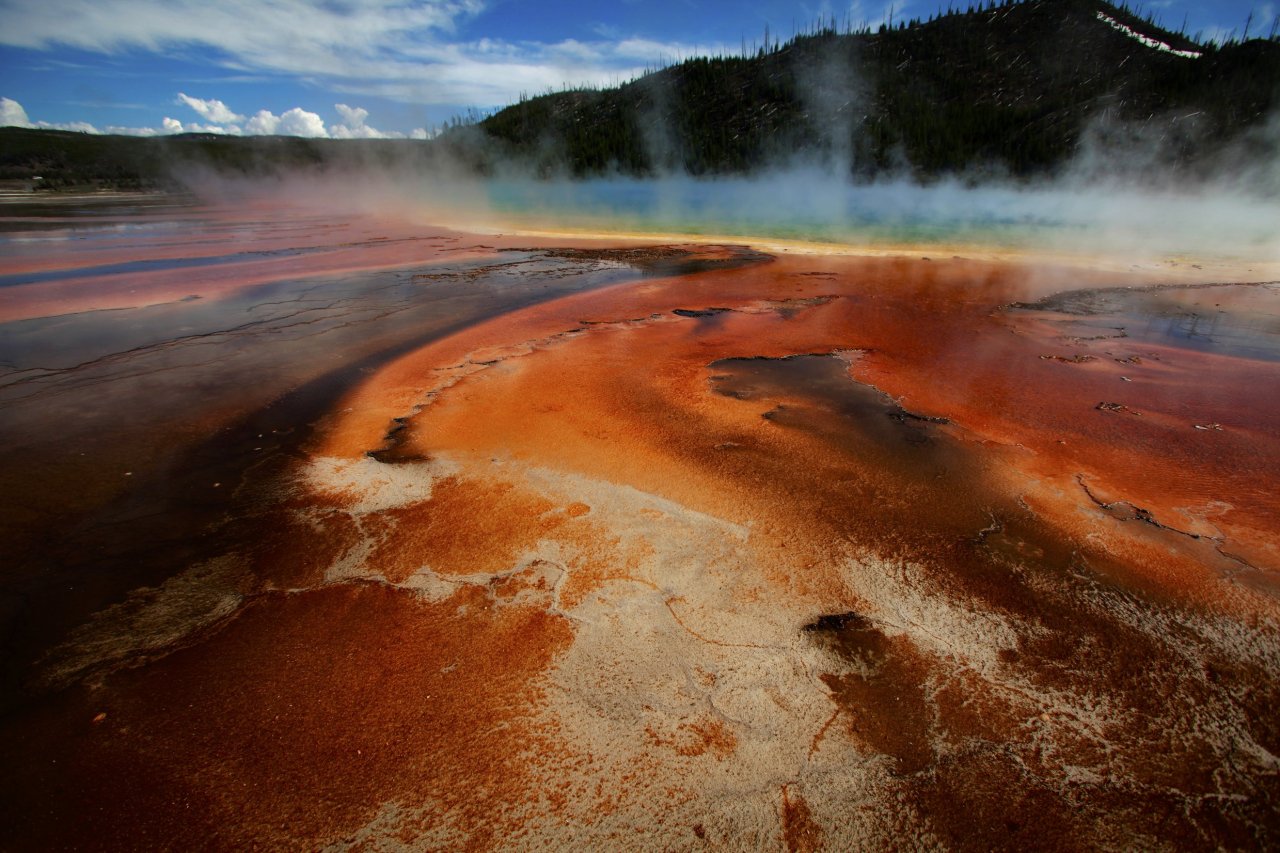Yellowstone National Park's hot springs are more than just evidence of a massive supervolcano brewing deep beneath Earth's surface. The boiling hot, acidic springs are also home to a unique virus that could one day create medicines targeting specific organs, or even tumors, in the future.
Scientists documented the lemon-shaped virus in a recent study in Proceedings of the National Academy of Sciences.
A Weird Virus
Rebecca Hochstein, now a postdoctoral researcher at University of Minnesota, found the peculiar virus, known as Acidianus, lurking in buckets of water she'd taken from the untrodden backcountry of the hot springs. She and her team used a combination of two technologies—cryo-electron microscopy and X-ray crystallography—to see the virus and watch how it behaved.
What they observed surprised them. The virus is a shape-shifter, transforming from a lemon shape into a long cylinder. The cylindrical form looks like bricks connected by ropes.
The researchers had some thoughts on the purpose of the cylindrical shape. They theorized that it might allow the virus to "squirt" its DNA into the cell it's infecting, Martin Lawrence, study co-author and chemistry professor at Montana State University (MSU), said in a statement.
A New Delivery Route for Medication
If that suspicion is correct, then the virus might someday be used as a medicine: a possibility stemming from how viruses function. That squirting of genetic material is how viruses gain a foothold into living cells. Once inside a host, DNA or RNA can be replicated, which means the virus replicates, too.
But an emerging field of research looks at using viruses to deliver medicine instead of their own genetic material. By turning viruses into a vessel for medicine, lifesaving treatments could reach specific parts of the body.
"This understanding could potentially be adapted for technological uses," Lawrence said in a statement. "If we could load these virus shells with a different cargo, say a drug, and target it to a particular place in the body, such as a tumor, it could then deliver the drug to just that specific location, making the drug more effective, or reducing side effects."
Plus, the way this virus can survive in a scalding hot and acidic hot spring is appealing to biotech companies, according to Mark Young, co-author and plant sciences and pathology professor at MSU.
Navigating the Dangers of Yellowstone

The field work was far from a walk in the park.
"The hot springs that we go to can be a little dangerous," Hochstein told Newsweek. Natural underground pipes flowing with scalding hot, acidic water can shift unpredictably, causing gaps that make the surface vulnerable to collapse. Signs lining the boardwalks in the tourist sites near hot springs warn visitors to stay on the trails. "You have to be really careful where you step," said Hochstein.
Hochstein headed far off well-trodden trails, boardwalks, bathrooms and parking lots. To stay safe, she stayed along the tree line, using a sampling pole to test the ground ahead.
"It doubles as a big stick where you can pound the ground ahead of you and make sure it doesn't sound hollow," Hochstein said. "And then, step gingerly."
The virus has been difficult to study because it cannot be grown in a lab. But the research is continuing, and soon enough, a capsule made from it could carry your medication.















